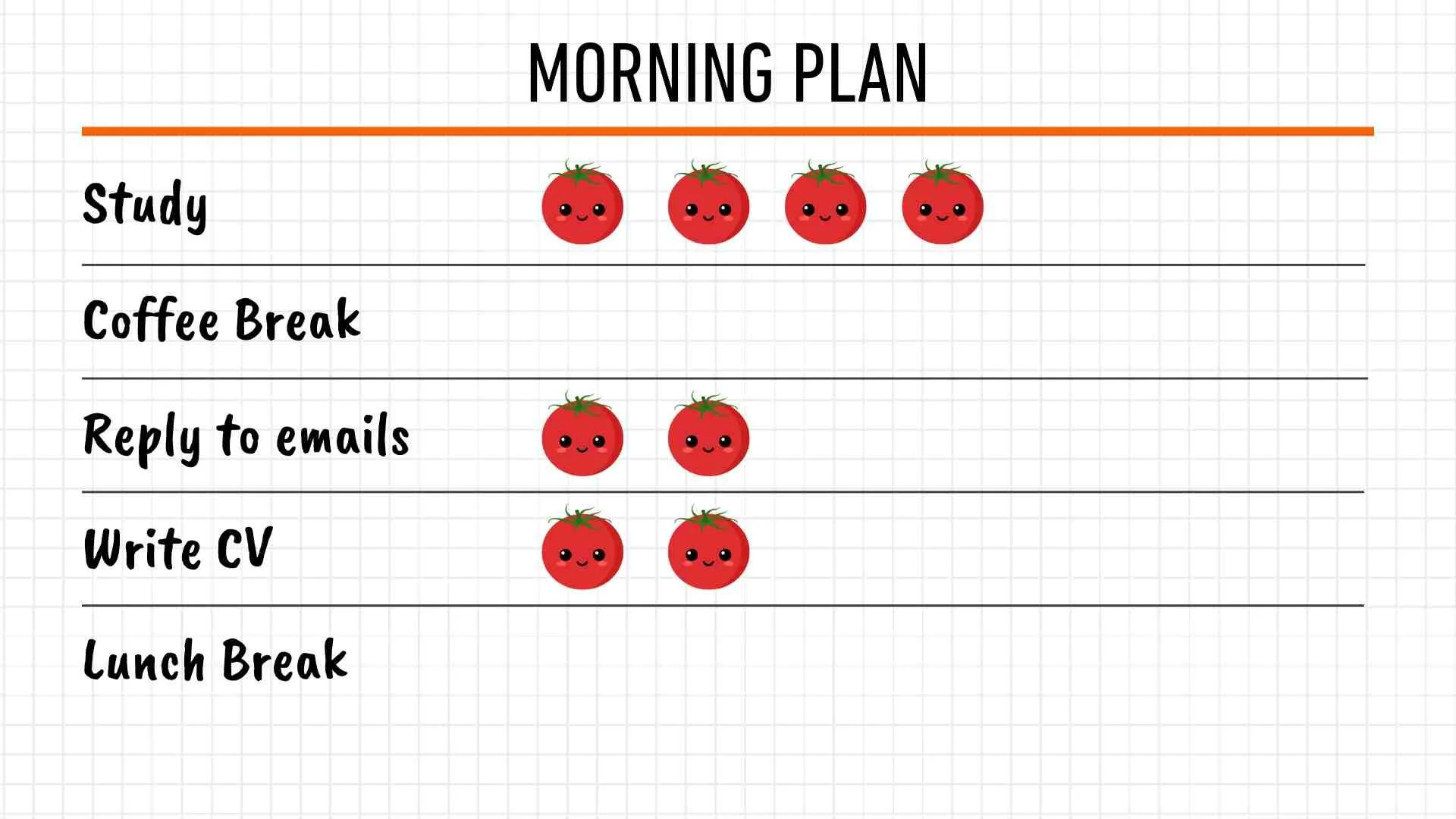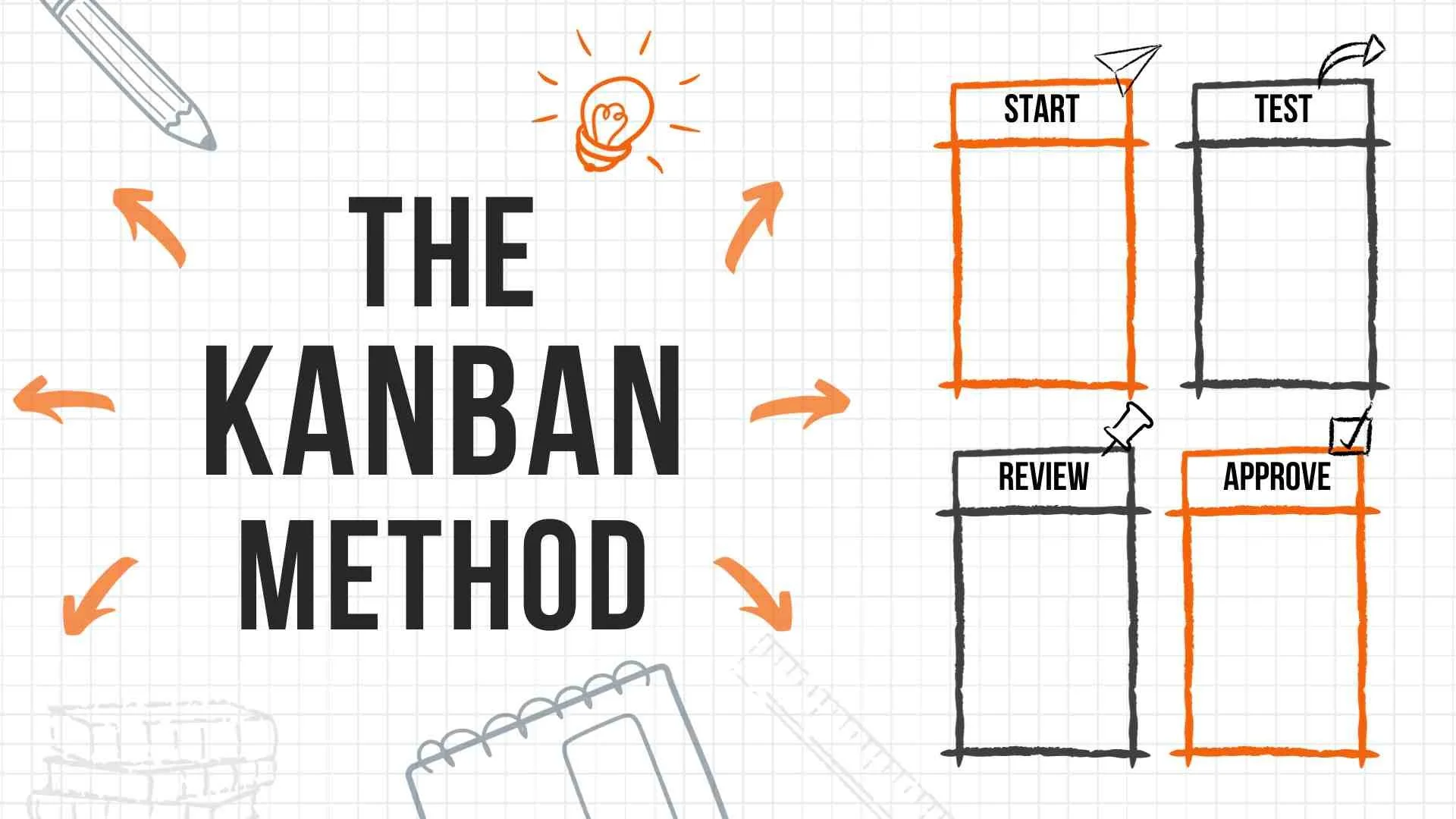The Pomodoro Technique
What is the Pomodoro Technique?
The Pomodoro Technique is a time management method developed by Francesco Cirillo in the late 1980s. He even wrote a book on it.
The name "Pomodoro" is Italian for "tomato," charmingly inspired by the tomato-shaped kitchen timer Cirillo used during university to track his work sessions. Here's how it works:
Task Selection: Choose a task or series of tasks you want to work on.
Set the Timer: Set a pomodoro timer for 25 minutes. This is known as one "Pomodoro."
Work Intensely: Work on the task uninterrupted during this period. If a distraction pops into your head, jot it down on a piece of paper for later and continue working.
Short Break: Once the timer rings, take a 5-minute break. This short pause helps to decompress and relax the mind to prepare for the next session of work.
Repeat: After the break, go back to step 2 and repeat the process for another "Pomodoro.".
Longer Breaks: After four Pomodoros, take a longer break, around 15–30 minutes, to help prevent burnout and reduce stress.
The Pomodoro Technique's strength really lies in how simple it is to use, how it tells you exactly how many minutes to work, and its ability to help us focus without distraction.
When we break our work into manageable tomatoes, "Pomodoros", and make time for regular breaks, many of us can optimize productivity and reduce the potential for burnout.
This could be the method for you if you:
Love structure
Have a tomato-shaped kitchen pomodoro timer already
Often find yourself working for long periods in which your productivity suffers
Have work that doesn’t have an end date or noticeable stop point
Procrastinate easily or find it difficult to get back to work after a break
Is the pomodoro technique effective?
Really, the effectiveness of the method lies in how you use it and how you tailor it to your specific working style.
However, the main reason the method has gained such a large following is due to some of the following:
Combatting Procrastination: To those of us who procrastinate, the thought of working for just 25 minutes can make daunting tasks seem a lot more manageable. It's easier to convince oneself to start a task if the commitment is just a short tomato burst.
Regular Breaks: The short breaks keep us fresh and reduce the cognitive fatigue that can come when we power through for hours. This ensures that each 25-minute work interval is effective and helps maintain a consistently high level of performance throughout the day.
Protection from Burnout: For many of the same reasons above about breaks, the Pomodoro Technique helps prevent us from diving into something for hours without a break, which can lead to burnout over time.
Minimized Distractions: Just knowing that there's a break coming up helps us resist the urge to pick up our phone or open up YouTube. Instead of immediately jumping on every incoming email or thought, these things can be postponed and made into their own section of time or thought about in a break.
Momentum Building: A lot of people like the feeling of completing a goal, and each time segment in this method can be seen as a little goal. Completing each of these throughout the day can provide a sense of accomplishment. Over time, this builds momentum and the feeling of a “winning streak”.
Flexibility: While the standard Pomodoro suggests 25-minute work intervals, you can adjust these timings based on what suits your work style. Some people go for longer intervals if they find it better aligns with their natural work rhythms.
However you choose to layout your work, the Pomodoro Technique really can provide a simple and flexible way to manage your time and make sure you relax along the way.
Also, all you really need is a stopwatch, and you’re good to go.
Plan pomodoros in advance
This method works best when we know what’s coming.
At the beginning of each day, we can spend a few minutes to outline what we need to do, estimate the time needed to do it, and plan accordingly. That’s it.
I will say that it’s better to overestimate than underestimate the time needed to do something; otherwise, we risk tasks spilling from one time chunk into the next, and it can mess up the whole plan if we’re not careful.
But, even if we plan things out perfectly, we can still find out that a task is a lot bigger than we anticipated. For this reason, it’s worth considering adding overflow pomodoros to your plan at the end of the day to tackle the things that spill over.
Experiment with the length of a pomodoro
So, we’ve had a look at what the Pomodoro Technique actually is, some of its benefits, and how to implement it. Now we can talk about tailoring it to fit our needs.
It’s very likely that some tasks take more than 25 minutes to complete, and that it’s more efficient to stick with them so you don’t ruin the flow of your work.
It’s also very likely that some people (myself included) work better in longer segments with longer breaks.
So, how can we tailor the method?
Modify the timing of pomodoros - This allows us to use the method’s flexibility to suit our workstyle or the tasks at hand.
Modify the timing of breaks - Some people need more than 5 minutes in a short break or more than 30 in a long break. This can be tailored to make sure you’re managing your stress levels to suit your needs and your risk of burnout.
Add more or less overflow segments - This will really depend on how good we are at judging the length of a task, but the more of these we have, the more wiggle room we have for unexpected work. It also takes the stress of things that seem to take a while. I aim for 2-6 of these.
What is a Pomodoro timer?
Originally, the timer, as the name suggests, was a tomato-shaped kitchen timer that was set to 25-minute intervals.
In reality, you can use anything from your watch timer to a phone stopwatch and alarm. It’s really as simple as you want to make it.
There are dedicated timers on the market, but I honestly wouldn’t spend the money; just use what you already have on hand.
The Downsides of The Pomodoro Method
The Pomodoro Technique is a popular tool for a lot of people. Especially with students and those with jobs that can be easily split into timed chinks.
But the tool is not without its drawbacks.
One of the primary criticisms revolves around its rigidity. The strict 25-minute work intervals will not work for everyone, or natural ebb and flow of everyone's work patterns.
Disrupting Momentum:
For instance, people who work in the creative fields or researchers, when deeply engaged with the flow of work, might find it counterproductive to interrupt their work just because a timer tells them they need a break.
Interrupting these states in these fields can disrupt the momentum of work.
Another downside is that the technique might not be well-suited for tasks that demand longer, uninterrupted stretches of attention.
Breaking concentration:
Jobs that require deep concentration, such as coding, writing, or detailed analysis, might suffer from frequent breaks, as the constant stopping and starting can be jarring to our train of thought.
It’s true that it can take time to dive back into the task after each break, which might reduce overall productivity.
Collaboration:
For collaborative environments or professions that require quick response times, the Pomodoro Technique can be a challenging thing to stick to.
If you imagine working in a setting such as a newsroom or a trading floor, the demands of real-time events can make strict rules on timing extremely impractical and even outright disruptive.
Feeling Under Pressure:
Lastly, while the technique does aim to improve our productivity by minimizing distractions, there are those of us for whom the pressure of the ticking clock can be a distraction in itself.
The knowledge that time is running out might cause some anxiety rather than focus, particularly for those who are deadline-sensitive or prone to stress.
Conclusion
While the Pomodoro Technique does offer a very simple, structured, and ready-to-go approach to time management, and that works wonders for many, its one-size-fits-all nature might not be the right fit for everyone.
This will depend on how you work as an individual and the nature of the work itself.
As with any productivity method, its effectiveness largely depends on how you choose to use it and which method fits your needs.




